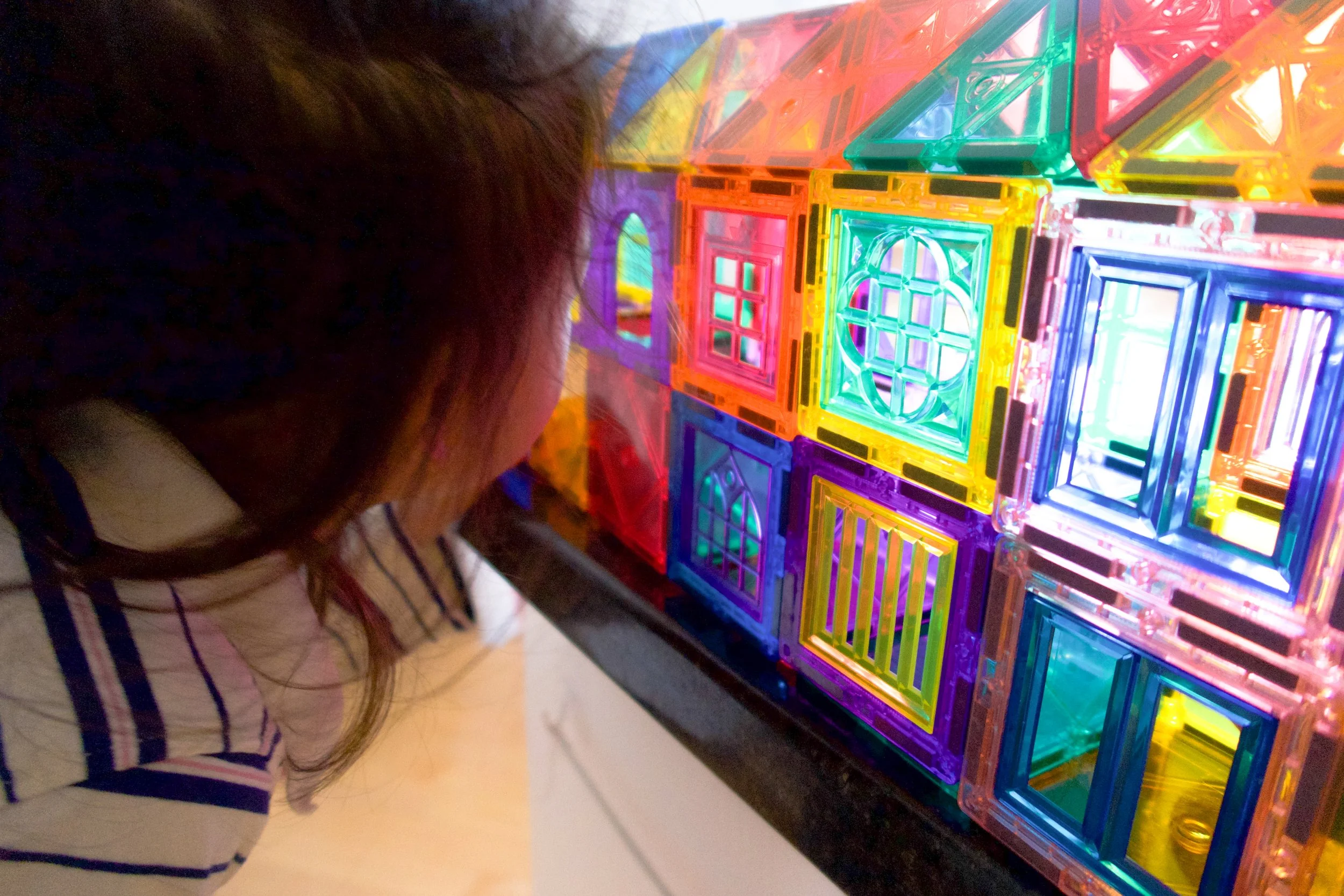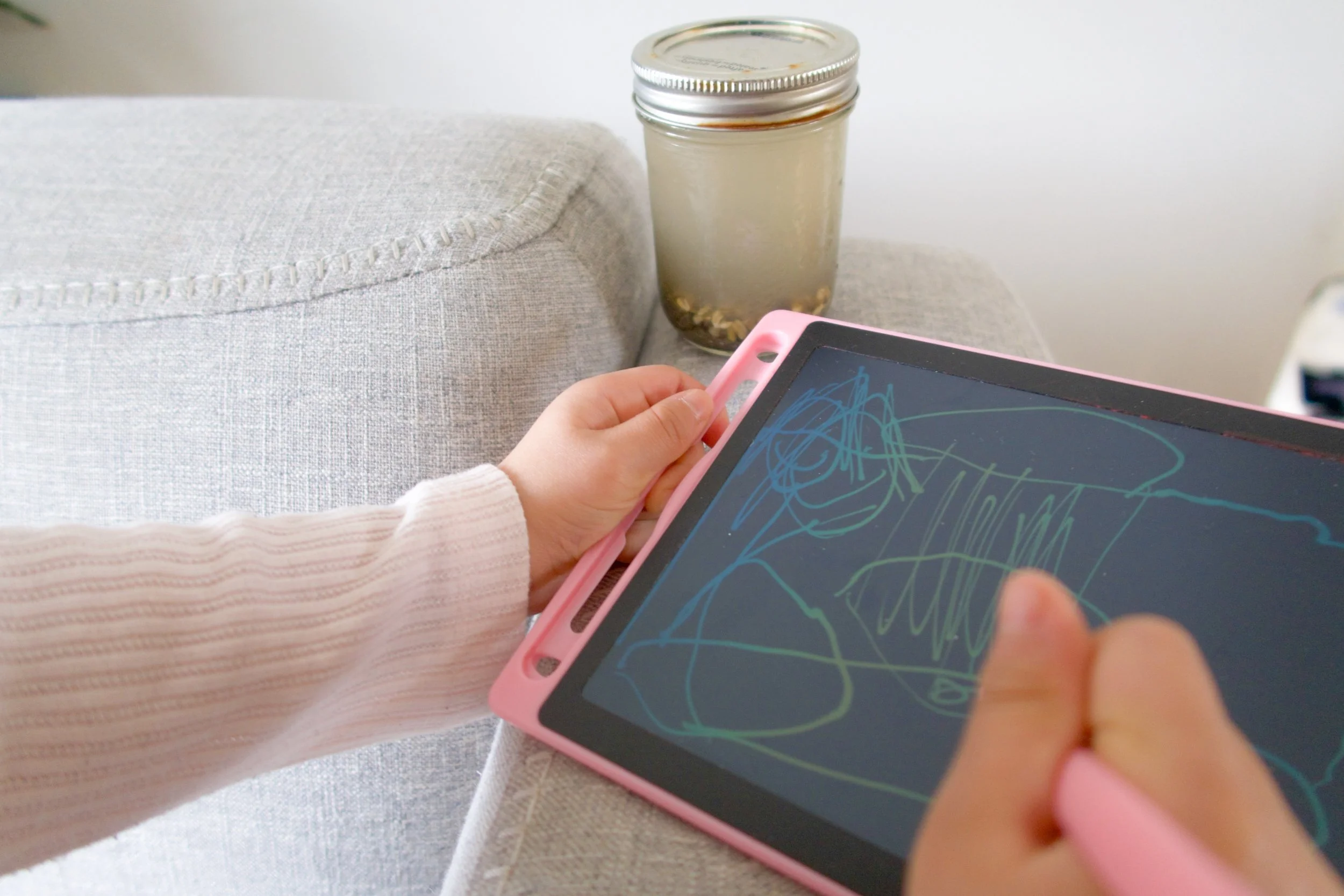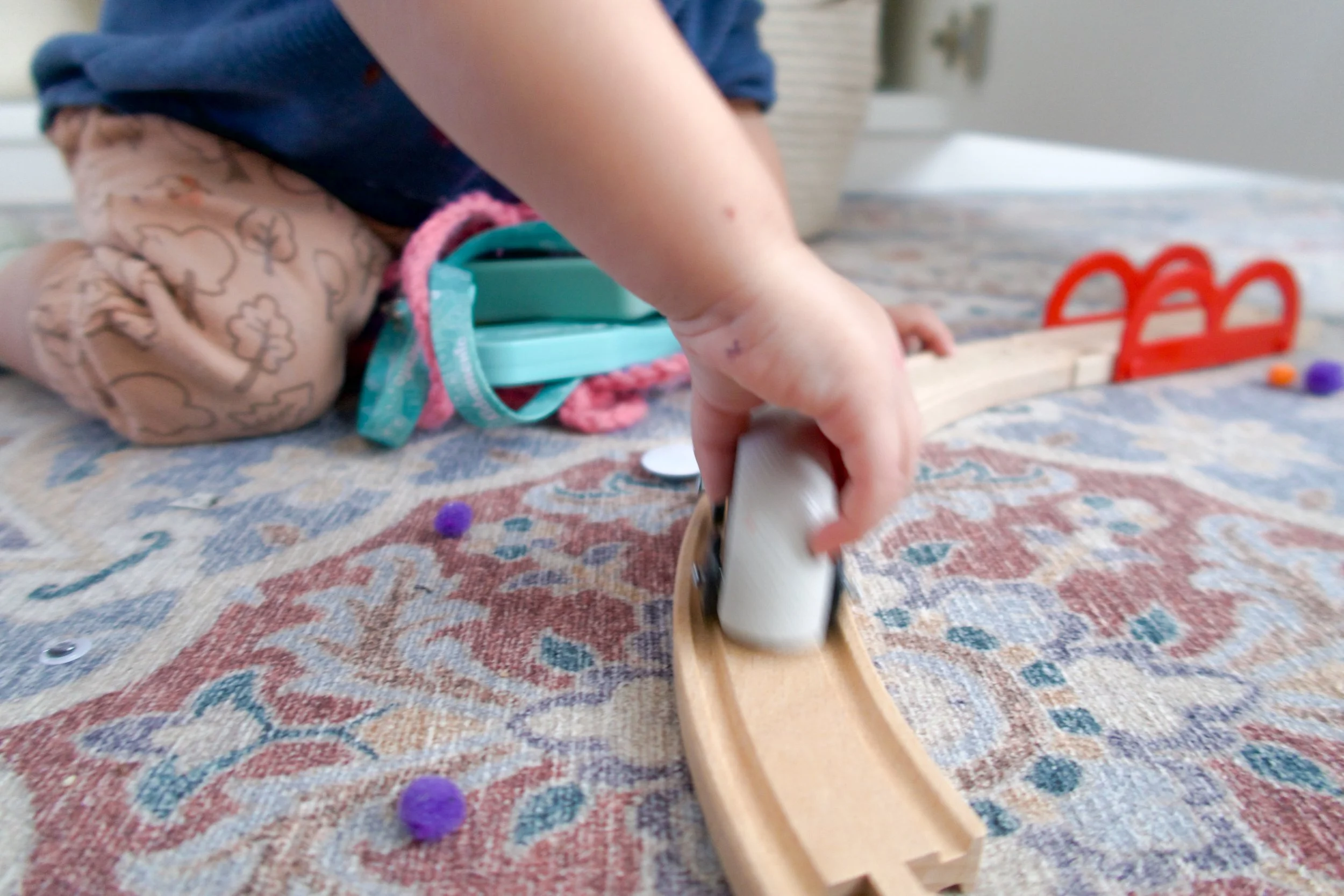Less is More: What I've learned in our first month of homeschooling
The first month felt like a sprint. I lesson planned to the brim - not so that we could rigidly follow a schedule, but so that I’d have plans and flexibility. And even that, felt more than necessary.
In the first three weeks, I created a Genesis Unit, where we would read through Genesis 1 and 2 as a way to introduce general topics to the girls. It was a great way to explore the earth, nature, animals, seasons, and our human bodies. In the fourth week, I followed my eldest’s long-lived fascination: space.
But mostly, the girls spent time playing - which actually didn’t come easily at first. At first, they begged for the TV or they told me they were bored, or didn’t know what to do. Believe it or not, it actually took time for the girls to jump into their imaginations, pull out their open-ended toys, and play. The less I interrupted, the more they exercised their muscles to play. The less I tried to solve their (menial) problems, the more they problem-solved themselves. The less I over-mediated their power struggles, the more they learned to communicate with one another.
In parallel, I was reading Alison Gopnik’s The Gardener and the Carpenter (I share my gleanings from this book here). And, I honestly underestimated the amount of unlearning that I needed to do. Even though I know that play is the basis of learning for children as young as mine (aged 4 and 2), I had to constantly fight the mentality that was saying, “better continue teaching her (my oldest) how to read, or else she’ll fall behind,” or, “all they did was play yesterday - gotta teach her something formal today.” Doing less did not come easily to me.
So here are three learning stories that I’m storing in my toolkit:
My eldest was building a house-like structure with magnetic tiles first thing in the morning. It collapsed as I was just about to start a formal lesson block. Then she asks, “how do I make it stronger?” It was one of those moments where, instead of a complaint or exasperation, she wanted to learn how to make the structure better. I responded, “look at our house. There are walls inside - maybe that will help.” Now, my zealous self still couldn’t take a beat, and I said, “you can try again later on.” But she rebutted, “I want to try it now.” I literally had to nudge myself and let go and yield a few more minutes. I was so glad that I did. She had built a stronger magnetic tile structure and added a tool to her toolbox. So awesome.
While I put my 2-year old down for her mid-day naps, my 4-year old has quiet time. This typically looks like listening to her Yoto and doing quiet activities. Once the little one is down, I also take the rest of this time to rest, knit, or get some work done. Very quietly, she goes to grab the earth-in-a-jar we created the week before and placed it in front of her on the couch. She took a drawing tablet (the one that has this button, which erases the drawings when pressed), and said “I’m going to draw what I see… I see rocks… and seeds… and water…” This wasn’t even an activity I had intended, but her curiosity naturally made her want to observe, survey, and make note.
Finally, my 2-year old. Her temperament is not as patient as her older sister. She is easily frustrated and makes it well-known. As a parent, it takes concerted effort to not offer pacifying solutions. For weeks, even before we began homeschooling, I would leave her to figure out how to connect train tracks for her much beloved train set. Over the last couple of weeks, she’s been connecting more than five tracks during her play. It’s truly a milestone!
So will I do less as I move forward? Yes and no. I think doing less really means, observing more and intervening less. But there is also so much activity going on, even when it comes to doing “less”. I am making note, I am still lesson planning so that I can feed and guide their interests, I’m assessing gaps, and being sensitive to their needs. The bonus part is that it allows me to be more acutely aware of my own needs and capacity.




